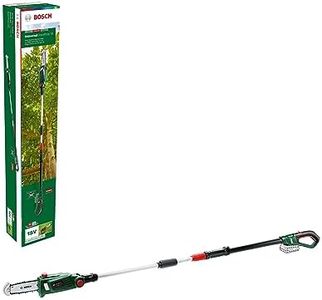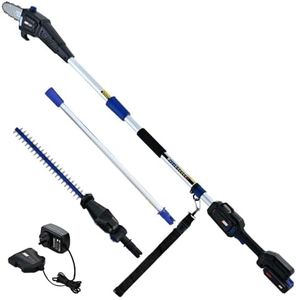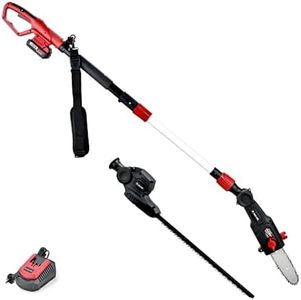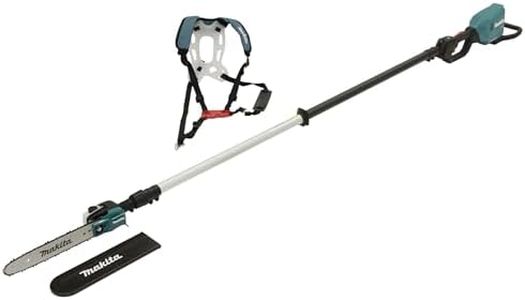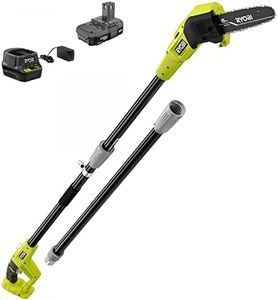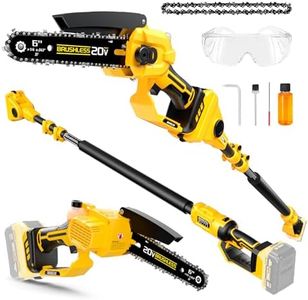We Use CookiesWe use cookies to enhance the security, performance,
functionality and for analytical and promotional activities. By continuing to browse this site you
are agreeing to our privacy policy
10 Best Battery Pole Saw
From leading brands and best sellers available on the web.Buying Guide for the Best Battery Pole Saw
Choosing a battery pole saw is a smart decision for those who need to trim or prune branches that are out of reach. Battery pole saws stand out for their convenience, portability, and low maintenance compared to gas-powered or corded options. To find the best pole saw for your needs, you should focus on a few key specifications that determine how easy and efficient it will be to use the tool in your garden or yard.Battery Voltage and CapacityBattery voltage and capacity directly influence how powerful and long-lasting your pole saw will be between charges. Higher voltage (such as 40V or above) generally means more cutting power, making it easier to handle thicker branches, while lower voltage models (18V-24V) are lighter but best for smaller jobs. Battery capacity, measured in ampere-hours (Ah), affects runtime; a higher Ah promises more work time before needing a recharge. If you have a large property or expect to be working for longer periods, opt for a higher voltage and capacity, but for occasional small trims, a lower value is sufficient and lighter to handle.
Bar LengthThe bar length is the usable cutting area of the pole saw, usually ranging from 6 to 10 inches. Shorter bars are easier to control and are ideal for thinner branches, while longer bars can handle thicker, more challenging branches but add to the weight and can be harder to maneuver in tight spaces. Consider the typical thickness of the branches you'll be trimming: for basic pruning, a shorter bar should suffice; for more substantial limbs, go for a longer bar.
Pole Length and ReachPole length tells you how high you can reach with the saw, often extending anywhere from 6 to 12 feet. Some models have telescoping poles for adjustable reach. If you have tall trees or need to trim high branches, choose a model with maximum extension; however, for basic or lower-hanging branches, a shorter or fixed-length pole will offer better control and less fatigue.
WeightThe total weight of the pole saw greatly affects how comfortable it is to use, especially for sustained periods. Lighter models reduce fatigue and are easier to handle, particularly when fully extended. If you anticipate longer sessions or if you're not used to handling heavy tools, pay special attention to the tool's weight and aim for something you can comfortably lift above your head.
Chain Speed and Cutting PerformanceChain speed, often measured in meters per second (m/s) or feet per second (ft/s), indicates how quickly the chain moves around the bar. Faster chain speeds mean quicker, smoother cuts, reducing strain and time spent on each branch. For lighter pruning jobs, modest chain speeds are fine, but if you often deal with thicker, hard wood, a higher speed will make tasks much easier.
Ease of Maintenance (Chain Tensioning and Lubrication)Look at how easy it is to adjust the chain tension and whether the saw has automatic or manual chain lubrication. Tool-free tensioning systems make it simpler and faster to adjust the chain on the go, while automatic oilers ensure smooth operation and longer chain life. If you prefer convenience and minimal fuss, prioritize models with tool-free tensioning and automatic lubrication.
